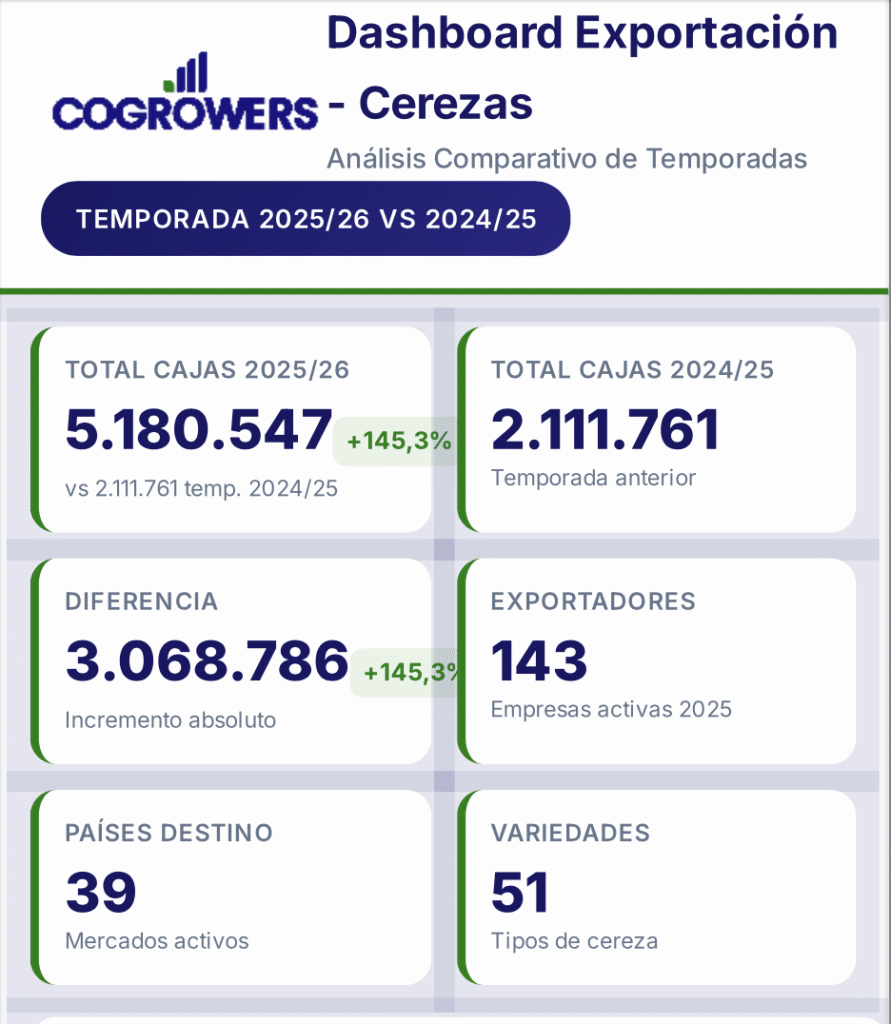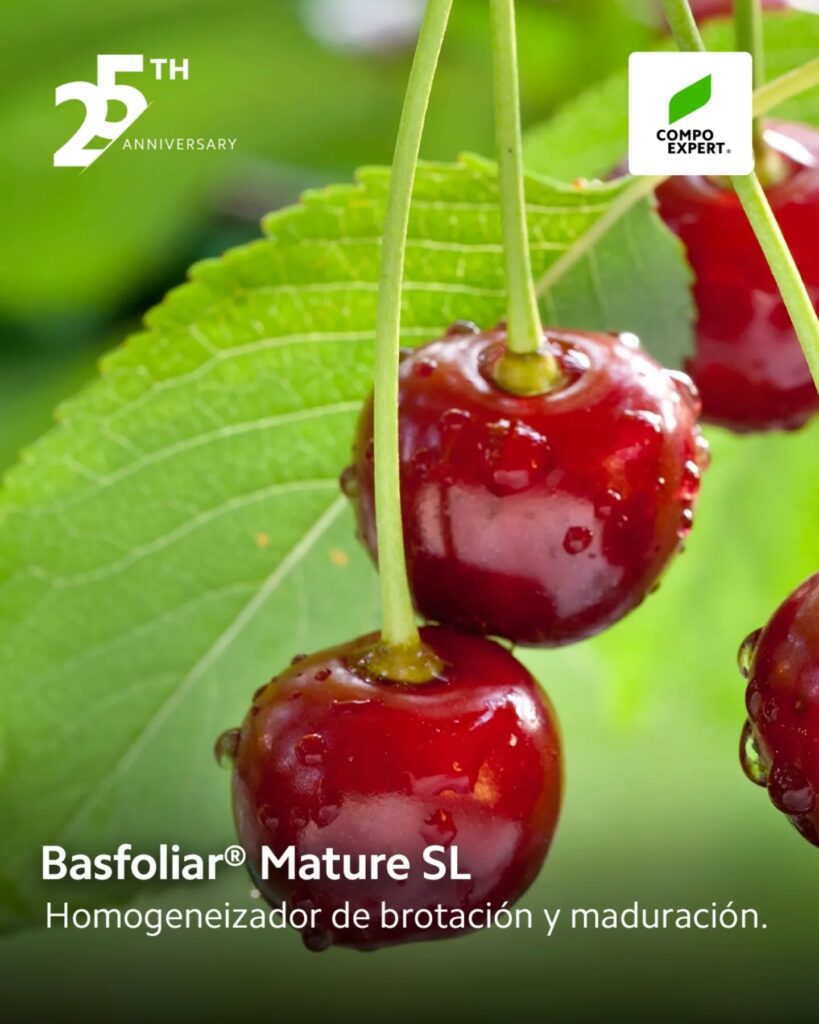
In everyday life, we are always trying to maximize our time in order to be more efficient in every area. It is a daily career that requires good time management. Without going any further, it is common to establish schedules for leaving for work, dropping off the children at school, where there is a time window, a defined route to get to the destination at the right time and not run into the traffic jam that regularly occurs in the mornings. Fortunately, those who have children will understand these circumstances very well, and it is probably a time management that is previously routed and timed day by day.
You will probably ask yourself: what does this have to do with fruit growing or in this specific case with cherry cultivation? Well, in fact, it does not have much to do with it, however, there is something that does mark a similarity between both situations and it has to do with knowing when to act in order to obtain a good result according to the objectives set.
In addition to the above, and through a simple daily relationship of the day to day of each individual vs the strategies that are to be implemented in cherry production with respect to efficiency, we can present some important aspects to consider when deciding the time of application of dormancy breakers (RD) and, in this particular case, the use of hydrogenated cyanamide (CNH) in an adult cherry orchard.
Although this season there is no desire to harvest “early”, given the different condition of a Chinese New Year later than the last season, in each production period there are always conditions without a pattern of behavior and that rather respond to a multifactoriality that is very difficult to predict; it is in this context that it is extremely important to establish the application times and thus define dates for the spraying of the RD in general, in this case of CNH, to obtain the best response to the strategy and thus be able to have the desired productive potential for each case.
From this point of view, as a "manual", a large part of the industry recognizes that the post-harvest begins the day after the last fruit is harvested and it is from there that all measures must be taken to have adequate flowering in spring and that, mainly, it is correlated to a good accumulation of carbon reserves.
Essays
Since the 2020-21 season, work has been carried out to find that moment of application for CNH and has also been carried out in the 2021-23 Tp with results that could well help in the decision to apply with respect to the information available (Fig. 1).
CNH applications were carried out on Santina and Lapins cultivars, both on Colt rootstock in an early area in the commune of Sagrada Familia, VII region, Chile. In the case of Santina, it is an analysis of the productive potential study, since for the purposes of the research no load regulation strategy was carried out; these sprays were from 06/30/21 to 08/04/21 in both varieties, being applications every seven days in sectors without any CNH treatment at 2%, obtaining six dates with plants treated with CNH and a control treatment (Without RD) for both varieties.
From the most advanced treatment, the open flowers for each treatment were recorded to generate the flowering curve and quality/production information for each treatment.
Figure 1. Flowering curve (%) in the use of CNH at different application dates in cvs. Santina and Lapins.
The first flowers were recorded from 08.09.21 and 13.09.21 for Lapins and Santina, respectively. When observing the flowering dynamics, it can be seen preliminarily that T1F3 with an application date of 14.06.21 was the treatment with the greatest advance in Santina, reaching 80% flowering and/or full flower (PF) on 17.09.21, 5 days before T0. Meanwhile, in Lapins, T1F3 is the most advanced, reaching the full flower stage on 09.09.21, 9 days earlier than the control. However, in these treatments it was evident that the concentration of flowering, which goes from the beginning of the flower to PF, was more dispersed compared to T0 and, in general, for most of the other treatments. It is well known that CNH applications produce a degree of “disorder” in the initial stages of flowering and that these can be corrected in some way with RD applications with homogenizing action as a strategy to reduce such conditions. Clearly, by carrying out this “tandem” it is undoubtedly aimed first of all at obtaining harvests a few days in advance and that, consequently, they produce better synchrony in the later phenological stages.
The perfect recipe for the scheme or strategies for applying RD does not exist, since it is evident that it must be specific to each case and that the orchard as a base must be effectively prepared from post-harvest and with the inherent precautions for the use of these products.
Cold Hours
Winter cold is perhaps the factor that interests us the most in winter, I can say that what was done in post-harvest “has already been done”, in good Chilean, since it is decisive that there is a good cold and that it goes in terms of the quantity and quality of this throughout the dormancy of the plants. Abscisic acid (ABA, for its acronym in English) is related to the accumulation by cold, since it would help to induce the dormancy of the buds at the entrance to dormancy (paradormancy), since it is a key compound to inhibit growth and by having an antagonistic relationship with gibberellic acid (GA, for its acronym in English), the latter being a growth promoter (Fig. 2).
Fig. 2. Changes in physiological metabolic activities, including those affecting plant hormones in buds during dormancy (Kitamura, 2017)
As winter progresses in the deep sleep of the crop, known as endodormancy, it is observed that as ABA decreases, GA increases, approaching the last part of ecodormancy; it can also be observed that there is an increase in auxin levels with a recovery of metabolic capacity. This is how CNH produces the inhibition of the enzyme catalase, which is responsible for the decomposition of hydrogen peroxide (H2EITHER2) in water and oxygen, which would detoxify the latter through a series of complex reaction sequences in the pentose phosphate pathway, which would increase the metabolism and breakdown of the yolk. In effect, there is a synergy in the endogenous metabolic processes caused by exogenous conditions (environmental conditions) that merge at an opportune moment to establish these strategies.
There are also interesting productive and quality traits that can be differentiated in each treatment (Table 1); thus, in the case of production, a better level of productivity is observed in Santina in T1F3, with this treatment in cv. Lapins having a significant difference with respect to the last application of CNH (T1F6). Santina and Lapins in T1F3 were observed with the best quality parameters, this considering the orchard load level; meanwhile,
Table 1. Productivity and quality indices in the use of CNH at different application dates in cvs. Santina and Lapins.
The use of RD is of vital importance for cherry production in Chile, this is because it allows for staggered harvesting by having large areas of cultivation, thereby also differentiating itself commercially with prime fruit in season.
The accumulation of winter cold measured as base cold hours 7.2 °C (HF) in a large part of the crop's productive area, is observed to be lower than the average from Tp. 2014/15-2022/23 and even lower in the past Tp. 2022/23. This could affect the timing of RD application, since at least 70% of the HF requirement for each variety should be available, in addition to considering the environmental conditions after applications. A spring with low temperatures is forecast, which is difficult to determine with certainty, but given these probabilities, all the historical information of the orchard, environmental patterns, among others, must be weighed.








